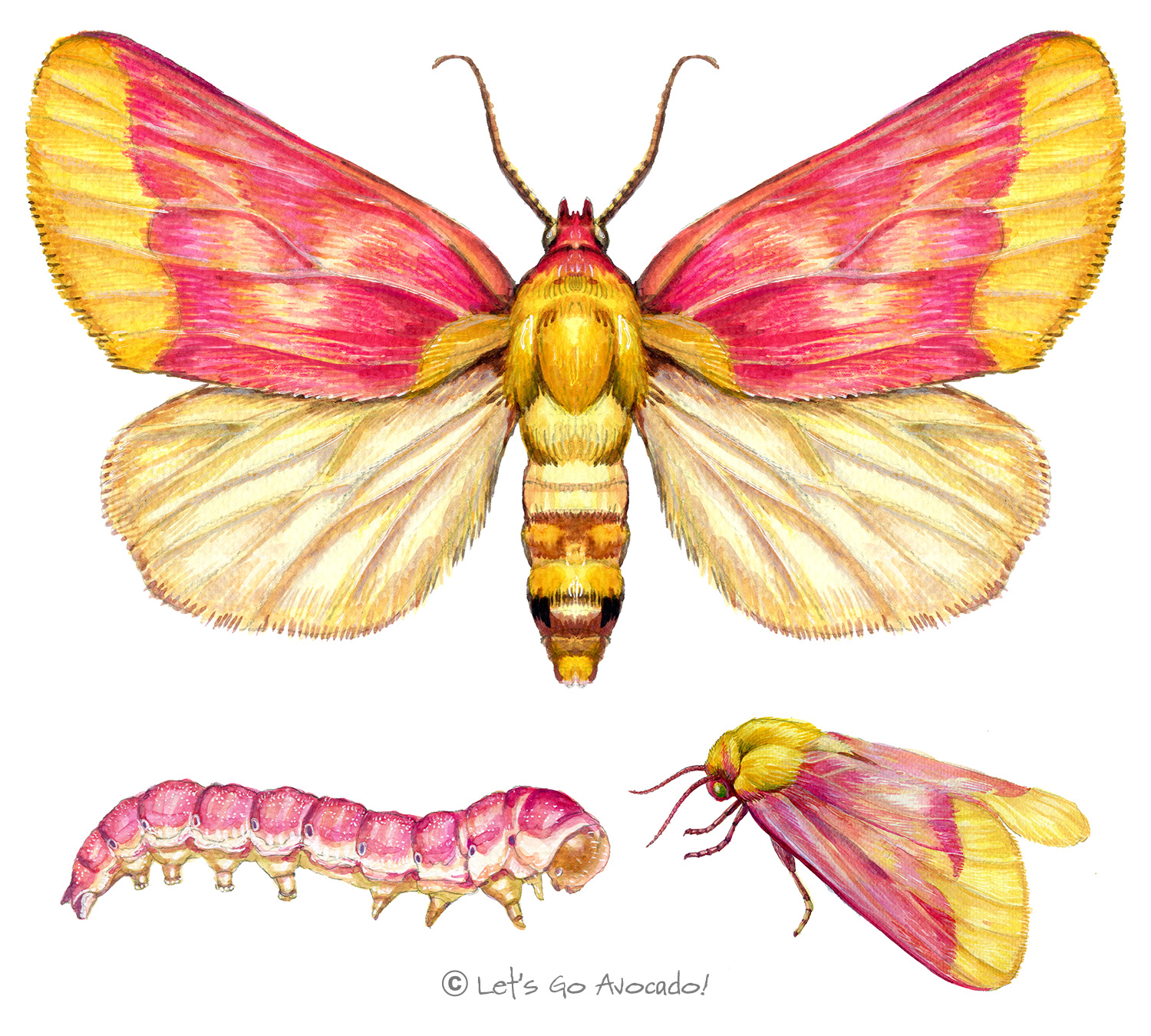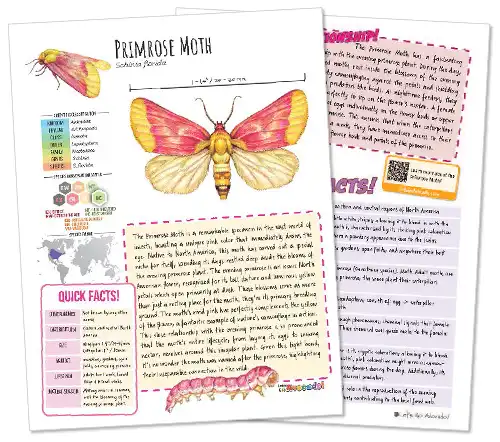The Primrose Moth: A Colorful Insect in Our Midst
Hey there, young nature enthusiasts! Let’s dive deeper into the fascinating world of the Primrose Moth. This insect may be small, but its story is filled with interesting facts and wonders.
What Exactly is a Primrose Moth?
Meet the Primrose Moth (Schinia florida), a member of the noctuid family. This moth stands out for its striking pink and yellow wings, which are not just for show. These colors are a form of camouflage, blending in perfectly with its favorite flower, the evening primrose. The moth’s wingspan is typically around 20-30 mm, making it a small but noticeable presence in its natural habitat.
The Life Cycle: A Transformation Story
Egg Stage
The journey of a Primrose Moth starts as an egg. The female moth lays her eggs on the leaves or stems of the evening primrose plant. These eggs are tiny and might be missed unless you’re looking very closely.
Caterpillar Stage
After a few days, these eggs hatch into caterpillars. These little larvae are voracious eaters, feeding primarily on the leaves and flowers of the evening primrose. During this stage, they grow rapidly, shedding their skin several times in a process known as molting.
Pupa Stage
Once they reach a certain size, the caterpillars find a safe spot to begin their transformation. They spin a cocoon around themselves, entering the pupa stage. Inside the cocoon, a remarkable change occurs over about two weeks. The caterpillar’s body reorganizes into a completely different form.
Adult Moth
Finally, the adult Primrose Moth emerges. It takes some time for its wings to dry and harden before it can fly off to start the cycle all over again.
Habitat and Distribution
Primrose Moths are predominantly found in North America, especially in regions where evening primrose plants are abundant. These moths prefer open fields, meadows, and gardens. The distribution of the Primrose Moth correlates closely with the availability of the evening primrose plant, as it is vital for their life cycle.
Nocturnal Activity: A Moth’s Night Life
Primrose Moths are nocturnal, meaning they are most active during the night. As dusk falls, they begin their activities, which mainly involve feeding and mating. These moths have a specialized proboscis, a tube-like mouthpart that they use to sip nectar from flowers, particularly from evening primroses that bloom at night.
Camouflage: Nature’s Disguise
One of the most intriguing aspects of the Primrose Moth is its ability to blend into its surroundings. The colors of its wings mimic the petals of the evening primrose, providing an effective disguise against predators like birds and bats. This form of camouflage is a vital survival tactic in the wild.
Pollination: A Crucial Role
While feeding on nectar, Primrose Moths inadvertently become pollinators. As they move from flower to flower, they carry pollen on their bodies, facilitating the cross-pollination of plants. This is crucial for the reproductive cycle of many flowering plants, including the evening primrose.
Mutualism with the Evening Primrose
The relationship between the Primrose Moth and the evening primrose plant is a fantastic example of mutualism. The moth relies on the plant for food and a place to lay its eggs, while the plant benefits from the moth’s role in pollination. This interdependence highlights the intricate connections within ecosystemsAn ecosystem is a community of living organisms, like insects and birds, and non-living components, like water and rocks, that interact with each other in a specific area. Learn More.
Spotting a Primrose Moth
If you’re on the lookout for Primrose Moths, the best time is during the day, surprisingly. They tend to rest on the flowers or under leaves of the evening primrose plant. Look for the signature pink and yellow wings that blend with the flowers.
Conservation: Protecting Our Tiny Neighbors
Like many species, Primrose Moths face challenges due to habitat loss and environmental changes. We can help by planting evening primroses in our gardens and supporting conservation efforts to preserve natural habitats. Every small step helps in maintaining the biodiversityBiodiversity refers to the variety of living things in an ecosystem. The more biodiversity there is in an ecosystem, the healthier and stronger it is. of our planet.
The Small Wonders of Nature
The Primrose Moth might be small, but it plays a significant role in its ecosystem. From its unique life cycle to its role in pollination, every aspect of this moth’s life is a testament to the wonders of nature. So the next time you’re out in a field or a garden, keep an eye out for these colorful, important insects. You’ll be amazed at what you can discover in the small wonders around us!
Remember, nature is full of surprises, and every creature, big or small, has its own fascinating story. Keep exploring and learning, and you’ll find endless wonders in the world of nature! 🌺🦋🌿











